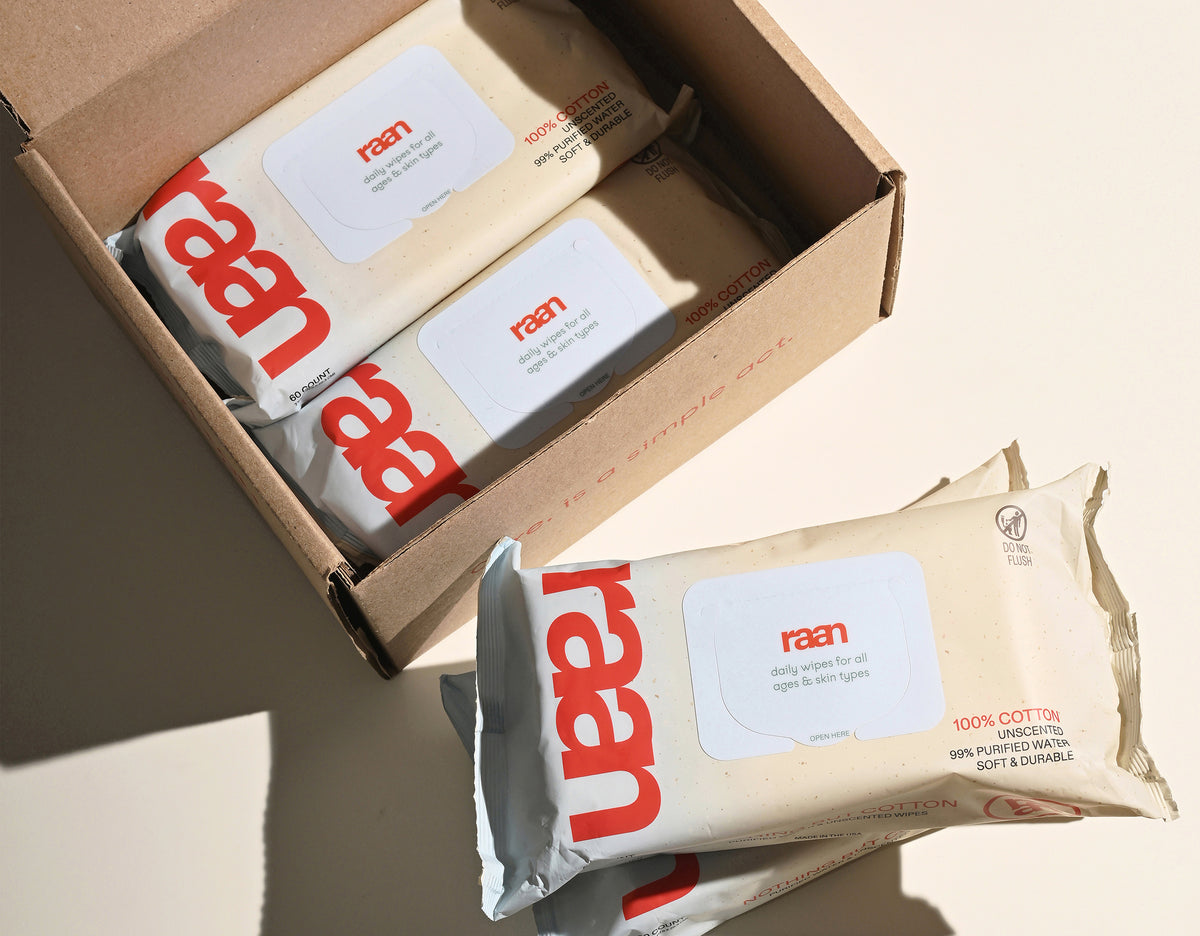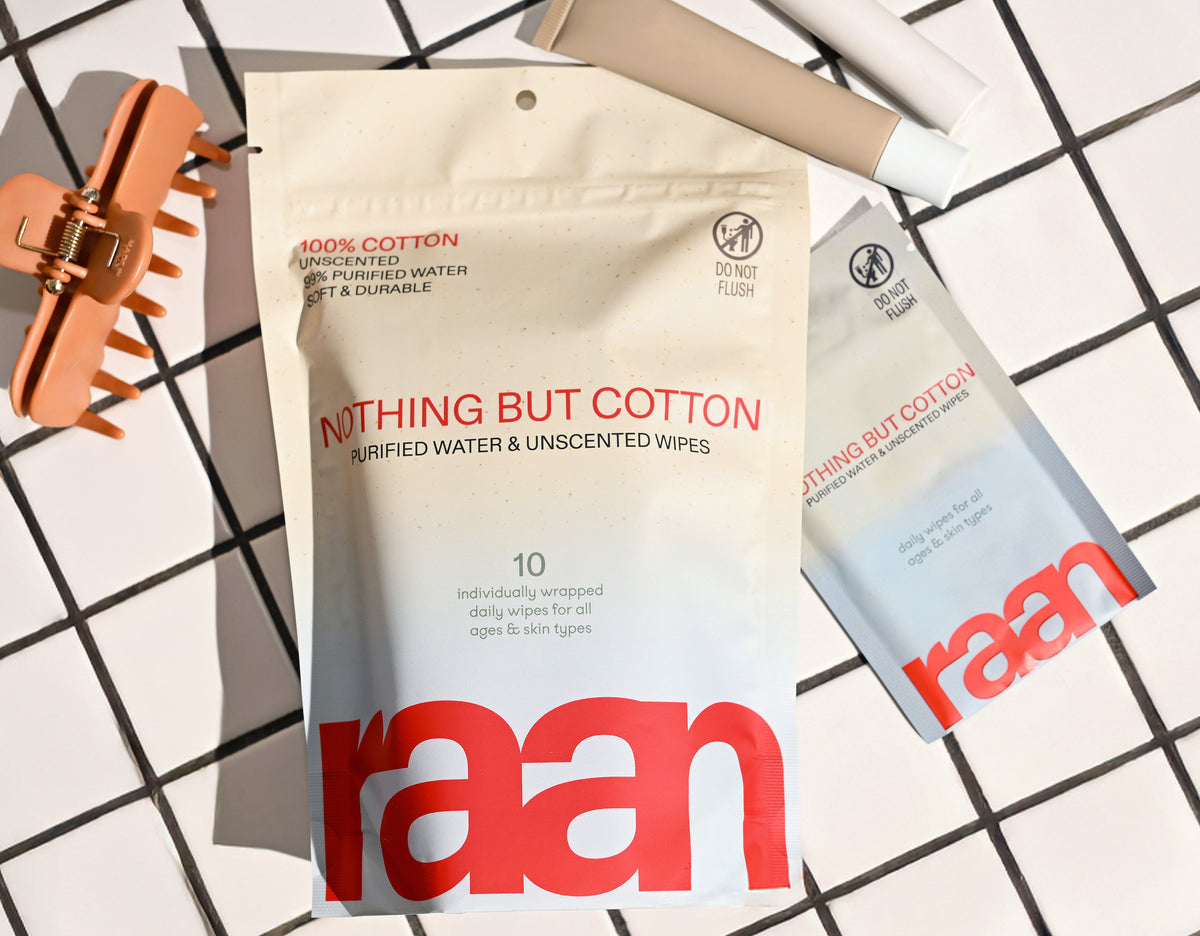Key Takeaways
- The best wipes for diaper rash prioritize gentle care over just moisture.
- Conventional wipes often contain ingredients that can irritate sensitive skin.
- Unbleached, 100% cotton wipes are recommended for soothing irritated skin.
- Using wipes with minimal, food-grade ingredients supports the healing process.
Table of Contents
- Diaper Rash 101: What It Is, Why It Happens, and Who It Affects
- Symptoms & Stages: How to Spot Diaper Rash Early
- Why Wipes Matter: How Your Choice Impacts Diaper Rash
- The Science of Simplicity: What to Look For in Diaper Rash Wipes
- Comparison: Which Wipes Are Truly Best for Diaper Rash Relief
- How to Use Wipes the Right Way to Prevent and Soothe Diaper Rash
- Special Cases: Rash-Prone, Sensitive, or Allergy-Prone Skin
- Beyond the Basics: Integrating Wipes Into a Healthier Diaper Routine
- Eco & Safety Factors: Making the Right Wipes Choice for Your Family and the Planet
- Beyond Baby: Who Else Benefits from Gentle, Simple Wipes
Best Wipes for Diaper Rash: Honest Relief Meets Everyday Care
When your baby's skin is red, irritated, and uncomfortable, the best wipes diaper rash solution isn't just about moisture, it's about choosing products that won't make things worse. Most conventional wipes contain plastic fibers, synthetic preservatives, and fragrances that can aggravate already sensitive skin. The answer lies in unbleached, 100% cotton wipes with minimal, food-grade ingredients that actually support healing.
Diaper rash affects over half of babies aged 4-15 months at least once every two months, making wipe selection crucial for prevention and relief. The difference between soothing and irritating comes down to what's inside the package, and what's been left out. For parents on the go, the Unbleached, 100% Cotton Pocket Wipe for Sensitive Skin offers a convenient, gentle solution.
To learn more about how to choose the right wipes, you can also read this in-depth guide on the best wipes for diaper rash.
Diaper Rash 101: What It Is, Why It Happens, and Who It Affects
Diaper rash appears as red, bumpy, or irritated skin in the diaper area, caused by prolonged moisture, friction, and contact with urine or stool. The baby's skin barrier is 30% thinner than adult skin, making it especially vulnerable to chemical irritants found in many wipes.
Key Fact: Diaper rash affects over 50% of babies ages 4-15 months at least once every two months, with peak occurrence during teething and illness.
Primary causes include:
- Prolonged exposure to wet or soiled diapers
- Friction from tight-fitting diapers or clothing
- Sensitivity to wipe ingredients like fragrances or preservatives
- Bacterial or yeast overgrowth in warm, moist conditions
Adults with incontinence face similar risks, making gentle wipe selection important across age groups.
Symptoms & Stages: How to Spot Diaper Rash Early

Early detection prevents mild irritation from becoming painful, raw skin. Check the diaper area at every change, looking for changes in color, texture, or your baby's reaction to touch.
| Stage | Appearance | Action Needed |
|---|---|---|
| Mild | Pink, flat areas; slight warmth | Switch to gentle wipes; increase air time |
| Moderate | Raised bumps; bright redness | Use minimal-ingredient wipes; apply barrier cream |
| Severe | Raw, bleeding, or pustules | Consult pediatrician; may need prescription treatment |
Remember that rash appearance varies by skin tone, irritation may appear darker or lighter than surrounding skin rather than the typical red.
Why Wipes Matter: How Your Choice Impacts Diaper Rash
Your wipe choice directly affects whether diaper rash heals or worsens. Conventional wipes often contain plastic fibers that create friction, synthetic preservatives that disrupt skin pH, and fragrances that trigger sensitivity reactions.
The science is clear: baby skin's thinner barrier means fewer ingredients equal safer care. Wipes labeled "hypoallergenic" or "for sensitive skin" aren't regulated terms, what matters is transparent ingredient lists and third-party certifications like EWG Verified.
The Real Difference: Switching from conventional to minimal-ingredient wipes often resolves recurring rash issues within 2-3 days, as parents remove hidden irritants while maintaining effective cleansing.
pH balance also plays a crucial role. Healthy skin maintains a slightly acidic pH of 4.5-5.5, while many conventional wipes are alkaline, disrupting the skin's natural protective barrier.
The Science of Simplicity: What to Look For in Diaper Rash Wipes
The best wipes diaper rash prevention starts with understanding what makes wipes truly gentle. Focus on these evidence-based criteria:
Essential Features Checklist
- Unbleached, natural fibers: 100% cotton eliminates plastic microfibers that cause friction
- Short ingredient lists: 5-6 EWG-verified ingredients maximum
- Food-grade preservatives: Sodium benzoate and potassium sorbate are gentler than synthetic alternatives
- pH-balanced formulas: Maintains skin's natural 4.5-7 pH range
- Third-party certifications: EWG Verified, dermatologist-tested, cruelty-free
Avoid these common irritants:
- Fragrances (even "natural" ones can trigger reactions)
- Alcohol (drying and harsh)
- Parabens and methylisothiazolinone (known allergens)
- Plastic fibers (create microscopic abrasion)
Label Decoder: "Fragrance-free" doesn't guarantee safety, check for hidden irritants like phenoxyethanol or benzyl alcohol in the full ingredient list.
Comparison: Which Wipes Are Truly Best for Diaper Rash Relief

Not all gentle wipes deliver the same results. Here's how leading options compare across the factors that matter most for sensitive, rash-prone skin:
| Feature | Water-Based Wipes | Plant-Based Wipes | Raan Cotton Wipes |
|---|---|---|---|
| Fiber Material | Synthetic blend | Bamboo/plant mix | Unbleached 100% cotton |
| Ingredient Count | 8-12 ingredients | 6-10 ingredients | 5 EWG-verified ingredients |
| Preservative Type | Mixed synthetic | Plant-derived | Food-grade only |
| Plastic Content | Standard packaging | Reduced plastic | 70% less plastic vs standard |
| Third-Party Verification | Limited | Varies by brand | EWG Verified, Natural Cotton |
Raan's unbleached cotton wipes eliminate the plastic microfibers found in conventional options, reducing friction against inflamed skin. The five-ingredient formula uses only food-grade preservatives, the same sodium benzoate and potassium sorbate found in baby food, rather than synthetic alternatives that can disrupt skin pH. For families who need a versatile supply, the mess-ready pack is a practical choice for home and travel.
For a deeper dive into the science and selection of gentle wipes, you may also find this article on the best baby wipes for diaper rash helpful.
How to Use Wipes the Right Way to Prevent and Soothe Diaper Rash
Technique matters as much as wipe selection. Gentle application prevents further irritation while thorough cleaning removes irritants that fuel rash development.
Step-by-Step Gentle Cleaning
- Use fresh wipes for each pass: Never re-wipe with the same section to avoid spreading bacteria
- Pat, don't scrub: Gentle circular motions for boys; front-to-back for girls
- Allow air-drying time: Let skin breathe for 3-5 minutes before applying new diaper
- For heavy soiling: Rinse with warm water first, then follow with minimal wipes
Wipe Warming Safely: Warm wipes by keeping the pack at room temperature or holding against your body heat for 30 seconds. Never microwave wipe packages, this can create hot spots that burn delicate skin.
For active rash, use extra wipes rather than applying pressure. The goal is complete cleansing with minimal friction, quality wipes like Raan's cotton fibers accomplish this without the rough texture of synthetic alternatives. If you're just starting out, the starter set is a great way to try different options and find what works best for your baby's skin.
Special Cases: Rash-Prone, Sensitive, or Allergy-Prone Skin
Some babies experience recurring rash despite careful diaper changes, often indicating sensitivity to specific wipe ingredients rather than poor hygiene practices.
Common wipe allergens include methylisothiazolinone (a preservative), cocamidopropyl betaine (a surfactant), and even "natural" ingredients like chamomile or aloe from non-organic sources. When standard gentle wipes still cause reactions, switch to the most minimal formula available.
Reaction Protocol: If new redness appears within hours of using different wipes, immediately cleanse the area with plain water, discontinue the wipes, and document the ingredient list for your pediatrician.
Remember that "hypoallergenic" has no legal definition. True allergen reduction requires transparent labeling and third-party testing, certifications like EWG Verified provide the independent verification that marketing claims cannot.
Beyond the Basics: Integrating Wipes Into a Healthier Diaper Routine

The best wipes diaper rash prevention strategy combines quality products with smart daily habits that support skin healing and prevent future irritation.
Smart Daily Habits
- Prompt changes: Never leave wet diapers longer than 2 hours, soiled diapers should be changed immediately
- Strategic air time: Allow 5-10 minutes of diaper-free time daily when possible
- Barrier protection: Apply zinc oxide cream to clean, dry skin if redness appears
- Smart Daily Habits
- Change promptly: Never leave wet diapers for more than 2 hours; soiled diapers should be changed immediately
- Create breathing room: Allow 3-5 minutes of air exposure between cleaning and re-diapering when possible
- Layer protection wisely: Apply barrier ointment only to red areas, healthy skin needs airflow, not occlusion
Keep wipes within arm's reach of changing areas and store packages sealed to prevent drying. For daycare transitions, pack a small container with your preferred wipes to maintain consistency across caregivers. For more tips on gentle care, see this resource on the best wipes for sensitive skin.
Travel Kit Essentials: Pack wipes in a hard-case container to prevent crushing, bring backup water for heavy cleanups, and carry a small changing pad to create clean surfaces anywhere.
Eco & Safety Factors: Making the Right Wipes Choice for Your Family and the Planet
The best wipes diaper rash solutions balance immediate skin safety with long-term environmental responsibility, a choice that affects both your baby's health and the planet they'll inherit.
Standard wipes contain up to 80% plastic fibers, creating microplastic waste that persists in landfills and waterways. Even "biodegradable" claims require scrutiny, many plant-based wipes include plastic binding agents that prevent true decomposition.
| Impact Factor | Standard Wipes | Raan Cotton Wipes |
|---|---|---|
| Plastic Content | Up to 80% synthetic fibers | Zero plastic fibers |
| Package Waste | Hard plastic lid + pouch | 70% less plastic, no lid |
| Post-Consumer Content | Typically none | 35% recycled content in pouch |
| Box Recyclability | Mixed materials | 100% recyclable cardboard |
Raan's certifications, EWG Verified, Natural Cotton, Women Owned, Cruelty Free, provide third-party validation of both safety and ethical manufacturing claims that marketing alone cannot substantiate. For more on environmental and safety factors, you can reference this authoritative guide on treating diaper rash.
Beyond Baby: Who Else Benefits from Gentle, Simple Wipes

The same qualities that make wipes ideal for diaper rash, minimal ingredients, soft fibers, pH balance, benefit anyone with sensitive skin or daily cleaning needs.
Postpartum care: New mothers need gentle cleansing during recovery; harsh chemicals and synthetic fibers can irritate healing tissue.
Adult incontinence: Aging skin becomes thinner and more susceptible to irritation from conventional wipes designed for durability over gentleness.
Active lifestyles: Gym bags, office drawers, and travel kits benefit from wipes that clean effectively without leaving sticky residue or artificial fragrances.
Pet care: The same food-grade preservatives safe for baby skin work well for cleaning pet paws and faces without toxic ingredient concerns.
Frequently Asked Questions
What ingredients should I avoid in wipes to prevent worsening diaper rash?
Avoid wipes containing plastic fibers, synthetic preservatives, fragrances, and bleach. These ingredients can irritate sensitive skin and worsen diaper rash by disrupting the skin’s natural barrier.
Why are unbleached, 100% cotton wipes recommended for babies with diaper rash?
Unbleached, 100% cotton wipes are gentle and breathable, reducing irritation and supporting the skin’s healing process. Their simple, food-grade ingredients minimize exposure to harsh chemicals often found in conventional wipes.
How can I identify the early stages of diaper rash to take timely action?
Early signs include redness, small bumps, or irritated patches in the diaper area. Catching these symptoms early allows you to switch to gentler care and prevent the rash from worsening.
Are gentle wipes beneficial for adults with incontinence as well as babies?
Yes. Gentle wipes made with unbleached cotton and minimal ingredients provide soothing care for sensitive skin in adults, just as they do for babies. They help maintain skin comfort without unnecessary additives.






